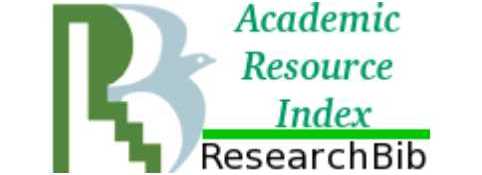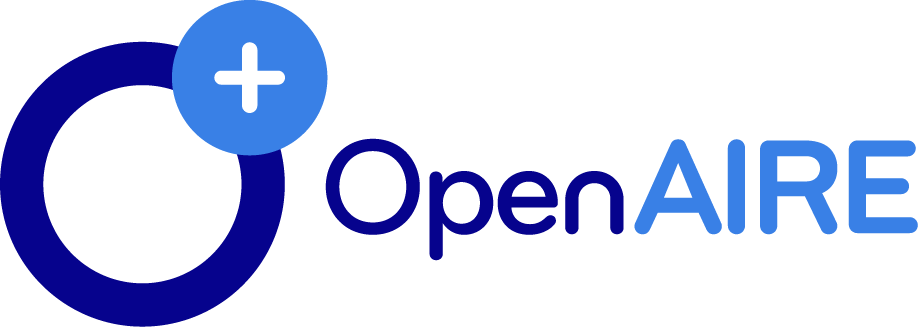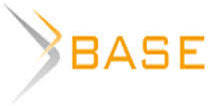БАЗОВОЕ ОБРАЗОВАНИЕ ПЕДАГОГОВ В БРАЗИЛИИ: ПРОБЛЕМЫ И ВОЗМОЖНОСТИ ОБУЧЕНИЯ СТУДЕНТОВ С ОГРАНИЧЕННЫМИ ВОЗМОЖНОСТЯМИ
Aннотация
Бразильские образовательные законы, основные принципы LDB, конституция Бразилии гарантируют право на получение образования всем желающим и обеспечивают социальную интеграцию групп мень-шинств. В данной статье основное внимание уделяется взаимосвязи между образованием учителей и их способностью обучать слепых студентов математике. Также в работе нашли отражение первоначальные результаты исследования в штате Гояс, Бразилия. Обращение к данной проблеме было мотивировано необходимостью противостояния реальности. Проведен анализ документов, регламентирующих бразильское образование, докторских и кандидатских диссертаций, ресурсов, имеющихся в электронном формате с полным доступом, научных докладов в периодических изданиях по проблемам математического образования. Ожидается, что результаты настоящего исследования будут использованы педагогами в организации математического образования студентов с ограниченными возможностями.Ключевые слова: Инклюзивное образование, обучение, ослабленное зрение, инвалидность, закон об образовании
К сожалению, текст статьи доступен только на Английском
INTRODUCTION
The Inclusion policies for people with special needs have achieved notoriety and prominence in society. Researches show an increasing matriculations numbers in regular schools and the reduction of those in special schools. This leads to think about formation of teachers, in this article specifically math, and the inclusion of students with visual impairment. This overview will provide information to assess the effective actions on inclusion of students and raise challenges and obstacles to overcome.
METHODOLOGY
This research is a bibliographical nature starting from journals, books, dissertations/theses and articles in the areas of Education and Mathematics Education, official documents and speeches that guide the Brazilian basic education, as well as educational projects in pedagogy courses and degree in mathematics.
1. Inclusion policies for the disabled in Brazil
The right to education of persons with disabilities (with special needs) is made possible since 1946 by Ministerial Decree. In 1947, the Benjamin Constant Institute (IBC) in partnership with the Getulio Vargas Foundation in Rio de Janeiro promoted the first course of specialization of teachers in the didactics of the Blind and, with the creation of the Guidelines and Framework Law - LDB n.4.024, art. 88, 1961, people with disabilities are "included" in the general education system, pointing out that the education of exceptional should, if possible, fall within the general education system in order to integrate them in the community [1]. However, only in the Brazilian Constitution of 1988, art. 208, it is that the disabled person is replaced, preferably attendance in regular school system.
V.E. Bishop [4] presents a literature review on the issue of inclusion of disabled people in regular school in the United States. According to the author, the effective inclusion of the visually deficient student (DV) is the process of promotion of child's development from the beginning of life, and effective school preparation to meet his/her educational needs.
Regarding to the Brazilian reality, the Statute of Children and Adolescents ensures the Law 8069/90 that "a child and adolescent with disabilities receive specialized care", still: “None of child or adolescent will be a subject to any form of negligence, discrimination, violence, cruelty and oppression, punished according to the law any attack, by act or omission to their fundamental rights” [2, p. 11].
In this meaning, the following questions arise: how the education is organized, and therefore the special education, and what are the objectives of the education plan in course in Brazil?
Nereide Saviani [10, p. 15] lists objectives presented in documents and speeches: higher profitability of basic education, with an emphasis on mathematics, sciences, language, information technology; selection and evaluation of professionals (promotion, dismissal, payment, merit); greater demands for access to higher education; restructuring of public spending (increasing the number of students per class and per teacher, there is no investment in infrastructure and salaries); resources only for the poorest (but with appeal to community collaboration); reform of the education system (decentralization / municipalization); a new concept of public unlinked state (responsibility of civil society, community).
In June 1994, in Salamanca, Spain, the publication of the Declaration of Salamanca and action lines about special educational needs, reaffirms its commitment to "give schools greater educational effectiveness" [3, p. 5], supported by the National Coordination for the Integration of persons with Disabilities (CORDE) in public manifesto, where the inclusive school will "help them to be economically active and provide them with the skills necessary for adult life" [1, p. 42], recognizing people with deficient as a potential to work. It is important to have “a properly designed life by scheduling your space being, which should integrate harmoniously with the collective being, in that way a person will be more successful in life” [7, p. 44 ].
In 2006 it was approved by the Organization of United Nations (OUN), the Convention about the Rights of Persons with Disabilities in which Brazil is a signatory. It was established on that Convention, that states should structure an inclusive education system, passing through all levels of education. The strategies adopted should ensure that people with disabilities are placed in the free education system and quality. In this same vein, in 2008, was promulgated the National Policy for Special Education in the Perspective of Inclusive Education, whose objectives are to “(...) Ensure the school inclusion of students with disabilities, global development disorders and high skills/giftedness, orienting education systems to ensure: access to regular education, with participation, learning and continuity in higher levels of education; mainstreaming of special education from early childhood education to higher education; offer specialized educational services; teacher training for specialized education, and other education professionals for inclusion; involvement of family and community; architectural accessibility, transport, the securities, communications and information; and inter-agency coordination in the implementation of public policies” [1, p. 14].
According to the report, special education becomes the pedagogical proposal of the school. In this sense: organizing special education on the perspective of inclusive education, providing the instructor functions, translator / interpreter and interpreter guide, as well as monitor or caregiver to students in need of support on hygiene activities, food, locomotion, among others that require constant help in daily school life [1, p. 17].
According to statistics from the Brazilian Ministry of Education, released in March 2016, 56.6% of Brazilian schools have students with disabilities included in ordinary classes. In 2008 it was 31%.The document also shows the number of students enrolled in special education on different educational levels. It is observed, for example, that the number of students enrolled in early childhood education, which in 2007 was approximately 25,000 students, in 2015 passed to over 500,000. In primary education the number of students enrolled in special classes and exclusive schools fell from 200,000 in 2007 to 10,000 registrations in 2015. The enrolment of students with disabilities in regular classes (students included) increased from about 200,000 in 2007 to nearly 600,000 in 2015. The number of students enrolled in special education classes common in high school, also presents significant growth from 2007 to 2015. As we can see in a chart below, the blue line - the number of enrolments in special classes and exclusive schools has decreased [3].

Source: Ministry of Education [3, p. 16].
According to the document, the increase of the number of students in special education is in line with the challenges posed by the National Education Plan, which explains that the universalization should include this part of the population, with ages ranging from 4 to 17, preferably in the regular school system [3].
It is observed that, although the proposal of the inclusion of students with disabilities in regular classes in various levels of education, it appears in several studies that teachers who work with disabled students do not have adequate training to promote the inclusion of these students [11].
2. Teacher training and the challenges of special education.
According to the National Guidelines for Special Education in Basic Education, teachers are considered to be qualified to work in common class with special educational needs students, when they prove that in their formation the special education contents have been included - to promote the development of skills and values to be able to: understand the special educational needs of students and enhance inclusive education; flexible pedagogical action in different areas of knowledge adequately to the special learning needs; continually assess the effectiveness of the educational process to meet special educational needs and ultimately acting as a team, including specialist teachers in special education [2].
From the social, cultural and political scenario presented, and still thinking in mathematics education, the question that arises is: which didactic and methodological principles proposed in teacher formation which favours the learning of students with visual impairment?
To answer the question referred, sought to authors analyze the curriculum organizational structure of higher education, as well as the contents to be taught by teachers to students in primary and secondary education. Regarding the formation of teachers in pedagogy courses, Gatti points to the fact that "among public universities analyzed, no discipline intended for the substantive content of each area" [5, p. 33], it can be understood that discussions will take place in discipline of methodology or, that the teachers during formation already have the knowledge. And the courses analyzed in the same survey, only 18% of the courses have specific teaching for math content being: numerals, four fundamental operations, fraction, problem solving. Still, with regard to special education, Sign Language appears in all courses for mandatory (Decree 5626 of Dec. 22, 2005), and issues relating to special education and inclusion are not charged to teachers in competitive examination for the public.
Highlights Vitaliano and Dall' Acqua in the Curriculum Guidelines for the exact area courses, the emphasis is found on preserving the traditional content. In specific the Curriculum Guidelines for Mathematics courses, the authors claim that "manifested a concern with the contribution that learning mathematics can offer on the formation of individuals to exercise their citizenship" [11, p. 115].
In this sense, analyzing 24 curriculum matrices of institutions offering degree courses in mathematics classroom, Martins [8] claims to have not found the menus none of the focus approach specifically for teaching blind people, neither on language nor production of teaching materials for students with special educational needs. In 87.5% of the surveyed institutions, there was the presence of Sign Language course. The unpreparedness of teachers to deal with pupils with special educational needs in inclusive classes is today's challenge.
Faced with the facts, there is a gap between theory and practice, or rather between official documents and effectiveness in preparation for work with DV students.
3. Cultural development of the possibility to overcome the physical differences
L.S. Vygotsky wrote about the general laws and equal development for all children, considering the specificity only on the way we perceive the world where "the blind and deaf-mutes are like a natural experiment which shows that the cultural development of behavior is not related necessarily to this or that bodily function" [12, p. 868], and also the plethora of cultural / school intervention possibilities: the development of higher mental functions is possible only by way of cultural development, whether by the line of the field of foreign culture media (speech, writing, arithmetic), or by the line of the internal improvement of own functions (development of voluntary attention, logic memory, abstract thinking, concept formation of free will etc.). Research shows that abnormal child usually has delays precisely in this respect. Such development does not dependent on organic dysfunction. That is why the story of the child's cultural development enables us to propose the following thesis: cultural development is the main sphere in which it is possible to compensate deficiency.
The development of psychic functions of a student with a visual impairment, according to Vygotsky, is not associated with physical limitations. In this sense, the role of education is to create artificial techniques, a system of signs or adapted to the peculiarities of cultural symbols psychophysiological organization, favoring the assimilation of the subject matter. Vygotsky says that the written language for the blind represents psychophysiological alternative ways of cultural development. Education is able to instill in the blind child, "speech and writing in the proper sense of the words" [12, p. 868].
The challenge teachers are facing, particularly in math, is what the students with visual disabilities need to learn and how to help them to make new school concepts as we build our relations with the world predominantly from visual reference. L.V. Zankov, who “was a co-worker of L.S. Vygotsky and a follower of his theories, conducted a large scale pedagogical experiment at public schools and created a system of developmental education” [6, p. 16]. This system is designed for children with the normal perception functions. However, its great success in teaching mathematics at the primary level may suggest new ways to overcome math challenges in working with DV students and formation of their theoretical thinking.
Analyzing the concept of formation process in DV, Monteiro and Aragon [9] highlight the need to use specific resources for access to information, however, the simple supply of such instruments do not guarantee learning, mediation and interacting. The formation of scientific concepts to the authors, is complex for anyone, because it is a process that involves different situations. The lack of research in the area is one of the factors that, according to the authors, hampers a better understanding of the formation of concepts in DV.
Unfortunately, on both national and international levels, there are a few studies that focus on more detailed analysis on the formation of scientific concepts for students with DV. However, data from international studies corroborate what we say so far. They are unanimous in stating that blindness does not prevent the development and concept formation and the possible difficulties faced by these students are not direct consequences of visual impairment, but the limitations of their experience… That is, the lack of sensory input in their cognitive processes and fragmented information, less complex, undermine the concept for these students [9, p. 6].
As seen in research in the area, the DV presents no obstacle in the teaching and learning and physical limitations do not prevent the development of mental potential of these students. It is noteworthy that the school has a fundamental role in the integral formation of the individual and, even with all the adversities encountered, either in teacher training or the structural conditions of the schools, it should be remembered that education is still the best way to reducing social inequalities.
CONCLUSION
There were presented in this text the analysis of the main laws regulating the inclusion of the disabled in Brazilian education and the curriculum analysis of teacher training courses, the early grades in Brazil. It was found that the curriculum guidelines do not include training courses that enable teachers, particularly in mathematics, to work with the students with disabilities. Only the discipline of Sign Language is considered in some menus, however, it was found that there is an effectively teacher formation policy to work with DV students. It was also found that the number of students with disabilities enrolled in regular classes in Brazilian Basic Education presented a significant growth in the past eight years, therefore there is a reduction in special classes. It was introduced to further studies in Educational Psychology indicating paths for more inclusive education, emphasizing on the formation of theoretical student’s thinking, regardless of physical limitations.

















Список литературы
Список использованной литературы появится позже.